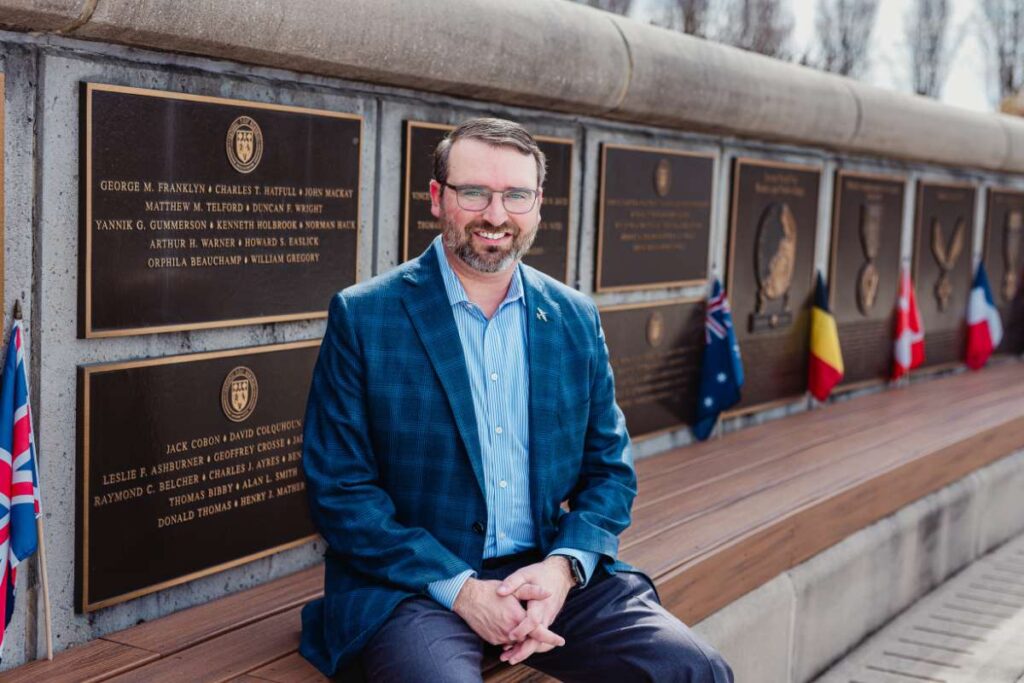FLYING FOR love. Fighting for peace. Dying for freedom. Thirty thousand members of the U.S. Army Air Forces died while taking on this call of duty when flying from Britain during World War II. More than a century of war altered the lives of many people, left tens of millions dead, and bestowed a legacy like no other — one expressed in the American Air Museum in Britain at Imperial War Museum Duxford. It’s a tale that Brandon Gregory, who lives right outside of Lynchburg, gets to support every day and share with the younger generation.
The American Air Museum boasts the largest collection of American military aircraft publicly displayed outside of the United States. More than 850 items — equipment, uniforms, keepsakes, and photographs — showcase 85 lived experiences in over 100 years of Anglo-American history. Whether a private person or a president, these lives impacted the war, or conversely, the fight changed them.
From 1943 to 1945, the 78th Fighter Group claimed the Duxford airfield in Cambridgeshire as home before seeing the place transformed into an air defense fighter station until its closing in 1968. Eight years later, Imperial War Museum officials purchased the site, later reformed to pay homage to America’s history in Duxford. No other than Queen Elizabeth II opened the museum to the public in 1977.
That museum personally connected with Gregory when he took the position of executive director in July 2022. His grandfather and two of his great-uncles fought in Europe.
“I had a great uncle who flew out of Europe in the 8th Air Force in the Second World War and was shot down in August of 1943, and so he spent the rest of his time as a prisoner of war with the Germans,” Gregory said.
Everyone but the pilot survived the crash, living to share the tale.

Gregory took the story to heart.
He grew up in North Carolina and graduated college with a history degree, later obtaining a position as a development director and chief fundraiser at the National D-Day Memorial in Bedford, Virginia, before working at the American Air Museum seven years later.
He now gets to visit the museum six to eight times a year while working remotely in the United States, often traveling to visit and work with donors — who are mostly situated in the states — to raise funds. Gregory leads his American team in these fundraising efforts, simultaneously supporting curation, conservation, and marketing teams based in the United Kingdom.
“We commemorate the pivotal role of air power preserving freedom by connecting generations to the stories of heroism and aircraft that have shaped history,” Gregory said.
Nineteen planes stand on display in the museum, ranging from a B-17 bomber to the fast SR-71 aircraft, showcasing history and its importance.
The lesson exists as one that Gregory loves to pass on to the next generation, starting with his children.
“I think the most important thing that I want them to understand and to get is that we are a free country, but we are a free country because of the service of our military and our service members and our veterans.”
Such understanding reaches the minds of those who visit the American Air Museum, replaying the fateful actions of the 30,000, allowing the fighters to take off once again in their hearts. GN
People wishing to donate or plan a visit to the American Air Museum in Britain can go to americanairmuseum.com.













































































